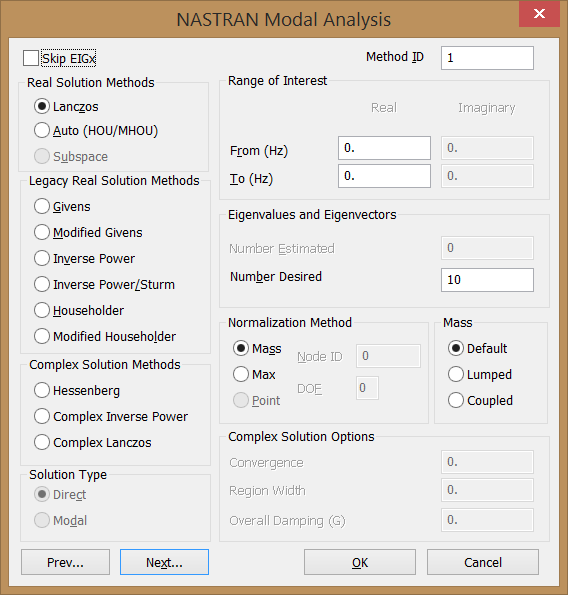Hi everybody,
I need to obtain the stiffness and the mass matrices from 2 different FE models, one is meshed with solid elements and the other one with shell elements.
I created the 2 meshes with virtualab, exported as a .dat file, performed an analysis with nastran and, with a matlab routine, I red the matrices from the .pch files.
To validate this procedure I am simply calculating the natural frequencies of the two models both with virtual lab and with matlab.
My problem is that the matching between the frequencies of the shell model, when calculated in matlab and in virtualab, are completely different: in matlab I obtain only 3 rigid body modes (instead of 6), the first flexible mode is at a very low frequencies (10 times smaller than the frequencies obtained in VL), and the other frequencies only have the same order of magnitude, but the error could be very important (from 50 to 100%).
Just to make everything more clear, I modified the exported (from virtualab) .dat file adding before "BEGIN BULK DATA":
SOL 103
PARAM,COUPMASS,1
PARAM,EXTOUT,DMIGPCH
The shell elements are CQUAD4, in the shell property PSHELL I have membrane effect, bending effect and transverse shear (as well as the thickness of the element, obviously); material is steel.
I read the .pch files from the 2 models with the same matlab routine.
In matlab, I tried to calculate eigenvalues in different way, just to be sure, and results are always the same.
I've already looked for some solutions in the forum but I didn't find anything... Does anybody know how to solve this problem?
I need to obtain the stiffness and the mass matrices from 2 different FE models, one is meshed with solid elements and the other one with shell elements.
I created the 2 meshes with virtualab, exported as a .dat file, performed an analysis with nastran and, with a matlab routine, I red the matrices from the .pch files.
To validate this procedure I am simply calculating the natural frequencies of the two models both with virtual lab and with matlab.
My problem is that the matching between the frequencies of the shell model, when calculated in matlab and in virtualab, are completely different: in matlab I obtain only 3 rigid body modes (instead of 6), the first flexible mode is at a very low frequencies (10 times smaller than the frequencies obtained in VL), and the other frequencies only have the same order of magnitude, but the error could be very important (from 50 to 100%).
Just to make everything more clear, I modified the exported (from virtualab) .dat file adding before "BEGIN BULK DATA":
SOL 103
PARAM,COUPMASS,1
PARAM,EXTOUT,DMIGPCH
The shell elements are CQUAD4, in the shell property PSHELL I have membrane effect, bending effect and transverse shear (as well as the thickness of the element, obviously); material is steel.
I read the .pch files from the 2 models with the same matlab routine.
In matlab, I tried to calculate eigenvalues in different way, just to be sure, and results are always the same.
I've already looked for some solutions in the forum but I didn't find anything... Does anybody know how to solve this problem?

